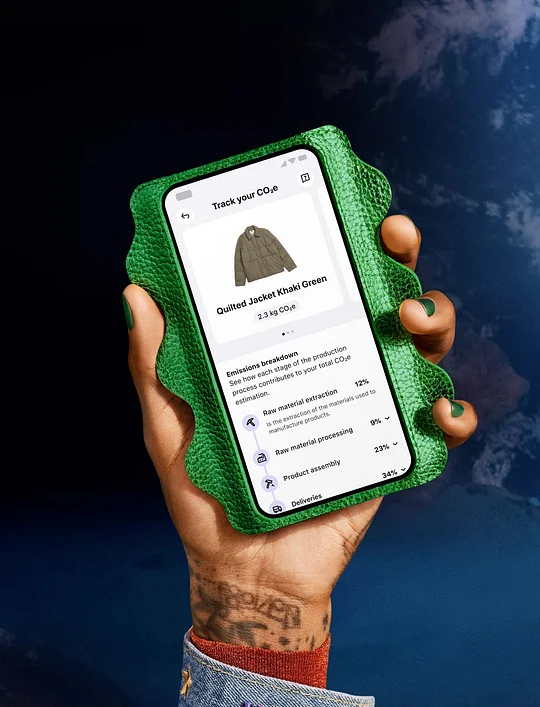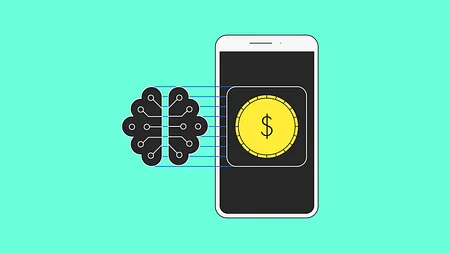What's needed for the next evolution of climate fintech?

Delivered straight to your inbox
Get each edition of Unfiltered - our no-BS, uncensored analysis of fintech news and hot topics sent to your inbox each fortnight.
Find out more
COP 27 came and went last month. It’s now time to look back at what happened and what still needs to happen. What can the climate fintech industry in particular reflect and iterate on as we head into 2023?
This self-reflection is especially important as we enter a phase of increased VC funding in the space, in which $1.8 billion was invested in the first 6 months of 2022, the next six months may tell a slightly different story. But with the climate events we have witnessed in the previous past six months, it's important that this level of investment pushes us into broader adoption. And remember: what fintechs create, incumbents later chase, partner or adopt.
How can we push the success out of the sector beyond what I’m calling the “tech-hippie segment” and into the mass adoption segment? This is ultimately what will guarantee long term success and a healthier planet. As Lorraine Whitmash explains, it’s all about self-identity and how people identify with the problem to solve.
Environmentally responsible consumption (think recycling) is based on an individual’s self-identity (think hippie). And self-identity is important because it leads to stability in an individual’s behaviour. Environmental self-identity induces consistency across a range of pro-environmental behaviours such as always checking to see if something can be recycled, or buying second clothing even if it would be quicker to get it from Zara. Conversely, eco-friendly consumer behaviour can also be considered as an opportunity to express an individual’s self-identity and to differentiate themself from other consumers e.g. ‘I’m doing this for the planet but also so people can see how amazing and cool I am.’
So to move from the tech hippie adopters and into mass adoption we need to create consistency with people who do not want to show the world what a great hippie they are. They want to show the world how amazing they are (who doesn't?) but not for the same core reasons the current tech hippies do. For this to happen, three key areas need to be iterated on: language, data and culture.
Do words like: net zero, carbon offsetting, greenhouse gases etc, really have space in consumer-facing products? I think not.
1. Language
As language is currently a key barrier to adoption, an iteration in the language used is the most important element in bringing in a larger customer base.
Do words like: net zero, carbon offsetting, greenhouse gases etc, really have space in consumer-facing products? I think not. These words have become filled with negative connotations of guilt, shame and much confusion. This in itself puts a barrier on adoption.
In addition, protecting the environment has become highly politicised. It has gone from standard policy to a culture war. Northern Europe is on the lower side of these culture wars but in the UK we are also encountering a discourse that states supporting climate change is for the elites and hippies only.
What language or words can be used instead that allow for a wider customer base to feel included in this green tech journey?
Research published in the FT surveyed Americans to ascertain what language regarding the climate catastrophe triggered them negatively and positively.
Key takeaways:
Change the language from a global problem to a localised problem of why it’s good for you, your family, your community, your country etc. because people care more when the effects can be felt closer to home.
Shifting language to ‘cleaner, safer, healthier’ resonated more positively than preventing climate change. That's because slowing down climate change is a MASSIVE undertaking, one that many feel unable to assist with. But making things safer, healthier, cleaner, is smaller and more easily doable.
Switch your language to talk about protecting the planet for people’s children and grandchildren, rather than discussing abstract nature or science. People will die for their family, only a few would for trees.
In summary, people relate to what they understand (kinda obvious, right?) and people universally relate to the love of their family and the pride of where they live. Access that and you access a wider segment.
Identifying the language and imagery that resonates best with who you’re talking to is so important. If you can get people to care about the problem, they will care about implementing the solution.
Being told that your purchases equal 10 carbon tonnes means nothing!
2. Data
For your customers to believe and respect you, it's pivotal that the data you show them is easy to digest and is transparent.
You need to break it down and understand how busy people are and how confusing all this information is, as not all consumers benefit from different types and details of information. Klarna’s impact feature is a great example of this:

Being told that your purchases equal 10 carbon tonnes means nothing! But breaking it down into food and travel helps you digest the information better. The next step is giving you something to work towards.
How can this information take a consumer from being an eco-worrier to an eco-warrior?
In 2023 transparency is King. If a customer wants to investigate the information you have shown them, how can they do so quickly and easily? Trustful data becomes particularly important when consumers could possibly be faced with arguments of greenwashing.
Omocom is the greatest example of company culture that runs from its core, to its CEO that I’ve come across.
3. Company Culture
Beyond your internal comms, energy-efficient servers, and B-Corp status, how does your fintech match your green credentials?
Omocom is the greatest example of company culture that runs from its core, to its CEO that I’ve come across. Omocom is a Swedish-based circular economy insurtech company that develops and distributes insurance products through their platform and with partners. They work with platforms that strive to increase the use of existing resources, for a more sustainable and circular future.
I had the pleasure of meeting Ola Lowden a few months ago and he gave me a tour of the Omocom headquarters in Stockholm.
Everything sourced for the office was second hand, from desktops to doors. There is a child play area, meditation room, snug and working areas. To be so committed to this pursuit is hard but proves their determination to be authentic from the top down. This in turn breeds a culture of self-belief in the product they are building.
My unfiltered opinion
A lot of funding went into climate fintech at the start of the year but in order for it to have the necessary impact, the three factors listed above must be implemented by climate start-ups to iterate upon.
Moving away from money, we are entering the next iteration of the climate fintech space where more must be done for the planet. The hippie segment will always buy into new products or features where they can do their part. But what about the mass market? Who is targeting them?
Not everyone thinks of themselves as tree hugging hippies but they do care about their family, their community and their property. This shift in mindset is imperative to unlocking the mass market potential and making a real change.



